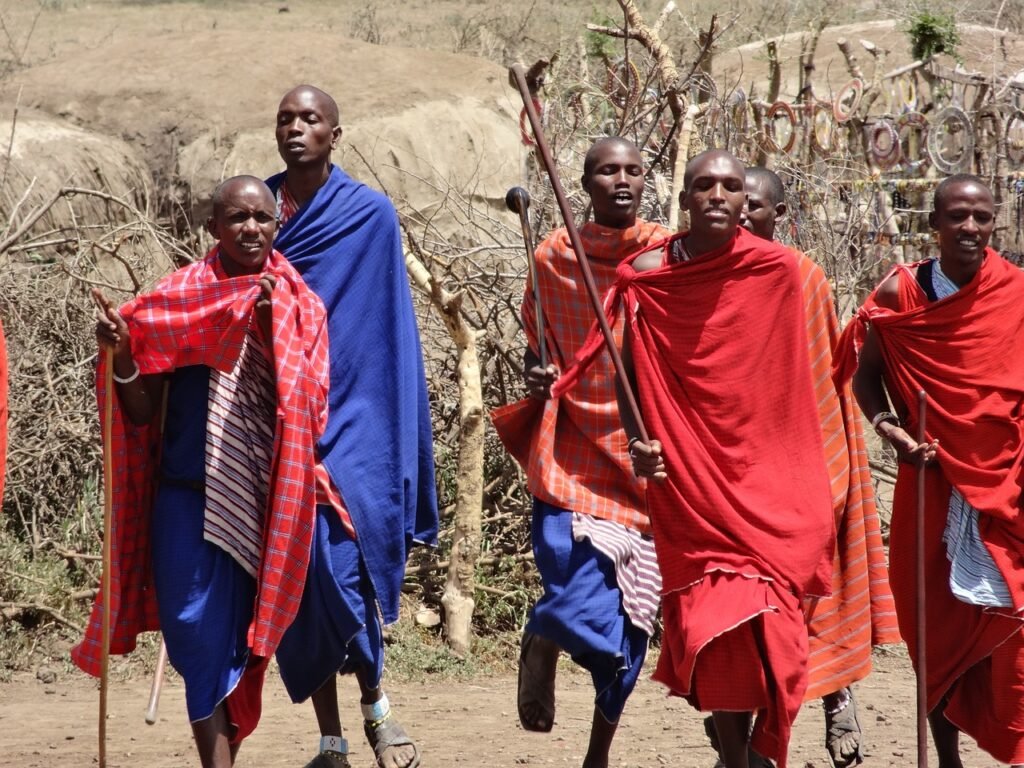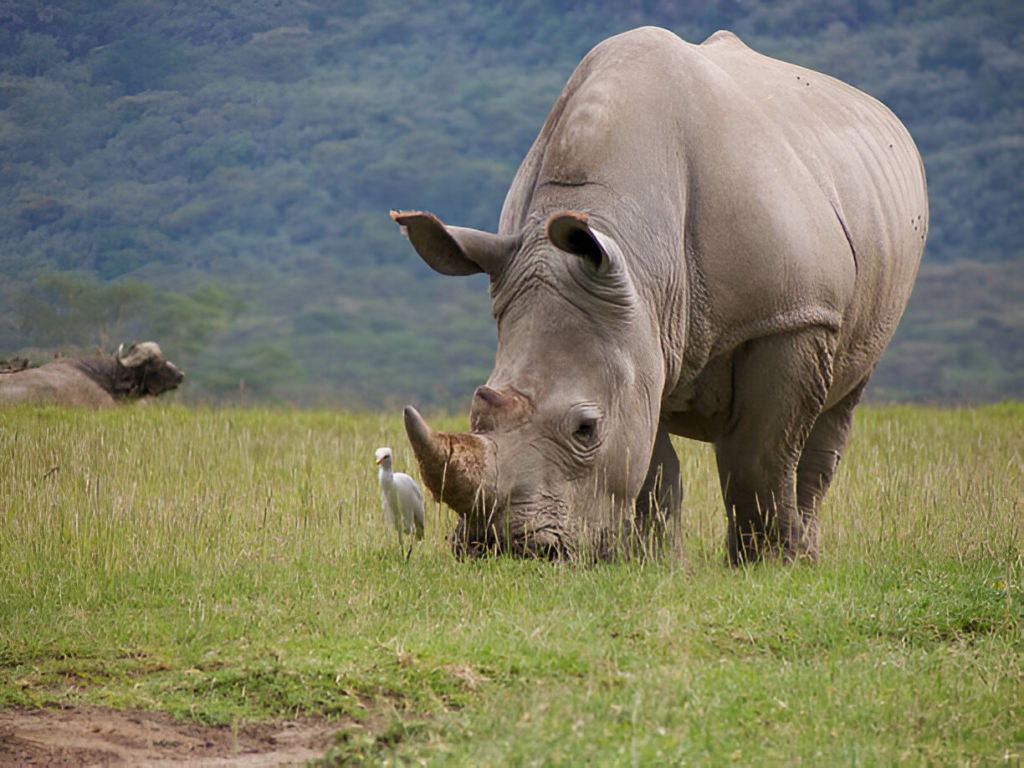Tanzania Voted the Best Safari Country of Africa. Tanzania is often regarded as one of the most exceptional safari destinations in the world, and it’s no surprise that the country was recently voted the best safari country in Africa. With its wide range of wildlife, including the iconic Big Five, breathtaking national parks, and rich cultural heritage, Tanzania offers a safari experience like no other. Whether you’re exploring the vast plains of Serengeti, witnessing the Great Migration, or admiring the wonders of the Ngorongoro Crater, Tanzania delivers the ultimate African adventure.
Learn more about Tanzania’s wildlife and safaris.

Tanzania Voted the Best Safari Country of Africa – Serengeti National Park: Home of the Great Migration
Serengeti National Park is one of the most renowned national parks in Africa, famous for its incredible wildlife and vast savannahs. It is home to the Great Migration, one of the greatest natural events on Earth. Millions of wildebeest, zebras, and gazelles move in a circular migration through the Serengeti and into Kenya’s Maasai Mara, followed closely by predators such as lions, leopards, and hyenas.
- Best Time to Visit: June to October for the dry season and December to March for the calving season.
- Top Sightings: Wildebeests, lions, zebras, and cheetahs.
Discover more about the Great Migration in Serengeti.
Tanzania Voted the Best Safari Country of Africa – Ngorongoro Crater: A Natural Wonder
The Ngorongoro Crater, a UNESCO World Heritage Site, is one of the most unique safari destinations in Tanzania. Formed by a massive volcanic eruption millions of years ago, it now serves as a natural enclosure for a vast array of wildlife, including elephants, rhinos, lions, and more. The crater offers one of the highest concentrations of wildlife in Africa, making it a must-visit for any safari enthusiast.
- Best Time to Visit: Year-round, though June to October offers the best weather for game viewing.
- Unique Wildlife: Black rhino, elephants, and flamingos on the crater’s lake.
Read more about Ngorongoro Crater and its wildlife.
Tanzania Voted the Best Safari Country of Africa : Diverse National Parks and Reserves
Tanzania is home to a wide variety of national parks and game reserves, each offering unique landscapes and wildlife experiences. From the vast plains of Serengeti to the wetlands of Selous Game Reserve and the baobab-studded scenery of Tarangire National Park, every region offers something different.
Selous Game Reserve
One of the largest wildlife reserves in the world, Selous offers boat safaris and opportunities to spot rare wildlife species like wild dogs and hippos.
Learn more about the Selous Game Reserve.
Ruaha National Park
A lesser-known gem, Ruaha offers exceptional game viewing without the crowds. The park is known for its large populations of elephants and rare antelopes.
Explore Ruaha National Park and its wildlife.
Tanzania Voted the Best Safari Country of Africa : Tanzania’s Big Five and Rare Wildlife Species
Tanzania offers unmatched opportunities to see Africa’s Big Five: lions, leopards, elephants, buffalo, and rhinos. Alongside these iconic species, Tanzania is home to rare animals like the African wild dog, the black rhino, and the shoebill stork.
Elephant Population
Tanzania is home to some of the largest elephant populations in Africa, particularly in Tarangire National Park, where you can witness herds of elephants roaming the grasslands.
Discover more about African elephants in Tanzania.
Black Rhino Conservation
The Ngorongoro Crater is one of the few places in Africa where you can spot the critically endangered black rhino.
Read about black rhino conservation efforts in Tanzania.

Tanzania Voted the Best Safari Country of Africa : Tanzania’s Incredible Birdwatching Opportunities
Tanzania is not just a haven for big game but also for birdwatchers. The country boasts over 1,000 bird species, many of which are endemic. The wetlands, lakes, and forests offer an opportunity to see a variety of birdlife, including flamingos, pelicans, and fish eagles.
Lake Manyara National Park
Known for its impressive populations of flamingos and over 400 other bird species, Lake Manyara is a great destination for birdwatching.
Read more about birdwatching in Tanzania.
Tanzania Voted the Best Safari Country of Africa : Tanzania’s Rich Cultural Heritage
Tanzania is not just about wildlife; it also offers a rich cultural experience. The country is home to over 120 different ethnic groups, including the famous Maasai people, who have lived in harmony with nature for centuries. Visitors have the opportunity to explore Maasai villages, learn about their customs, and experience traditional dances.
- Cultural Highlights: Visiting Maasai bomas (villages), learning traditional Maasai crafts, and exploring the history of the Hadzabe hunter-gatherers.
Discover more about Tanzania’s indigenous cultures.
Tanzania Voted the Best Safari Country of Africa : Best Time to Visit Tanzania for a Safari
Tanzania is a year-round safari destination, but the best time to visit depends on what you want to experience. The dry season (June to October) is considered the best time for wildlife viewing as the animals gather around water sources. The rainy season (November to May) offers lush landscapes and fewer tourists, though the animals may be more dispersed.
- Dry Season: Ideal for game viewing in the Serengeti, Tarangire, and Ruaha.
- Wet Season: Best for birdwatching and seeing newborn wildlife during the Great Migration’s calving season.
Plan your trip based on Tanzania’s seasons here.
Tanzania Voted the Best Safari Country of Africa : Tanzania’s Unmatched Safari Accommodations
Tanzania offers a range of accommodations, from luxury lodges to tented camps that provide an immersive experience in the heart of the wilderness. Whether you want to stay in a high-end lodge overlooking the plains of Serengeti or a budget-friendly camp close to the wildlife, Tanzania’s accommodations are designed to bring you closer to nature without compromising comfort.
- Luxury Lodges: Serengeti Four Seasons, Ngorongoro Crater Lodge.
- Tented Camps: Mobile camps that follow the Great Migration, offering prime locations for game viewing.
Discover the best safari accommodations in Tanzania.
Tanzania Voted the Best Safari Country of Africa : Tanzania’s Commitment to Conservation
Tanzania’s national parks and reserves play a critical role in wildlife conservation. The country has made great strides in anti-poaching efforts, habitat protection, and community-based conservation projects. These initiatives help protect endangered species like the black rhino and African elephant while promoting sustainable tourism.
Anti-Poaching Efforts
Organizations like the Tanzania Wildlife Management Authority (TAWA) and international partners have worked tirelessly to reduce poaching activities, especially in critical areas like the Serengeti and Selous.
Learn more about Tanzania’s anti-poaching initiatives.
Tanzania Voted the Best Safari Country of Africa : Tanzania’s Scenic Landscapes Beyond Safaris
Tanzania’s beauty extends beyond its wildlife. The country is home to some of the most stunning landscapes in Africa, including Mount Kilimanjaro, the tallest peak in Africa, and Zanzibar, a tropical island paradise. From the snow-capped peaks to the turquoise waters of the Indian Ocean, Tanzania offers diverse experiences for all types of travelers.
- Mount Kilimanjaro: A popular trekking destination, offering routes for both beginners and experienced climbers.
Learn more about trekking Mount Kilimanjaro.
- Zanzibar: Known for its white-sand beaches, clear blue waters, and rich history as a spice trade hub.
Plan your visit to Zanzibar’s stunning beaches here.
Tanzania’s Contribution to Ecotourism
Tanzania has embraced the principles of ecotourism, ensuring that wildlife conservation efforts are coupled with sustainable tourism practices. Many lodges and tour operators adhere to strict environmental guidelines, and the revenue generated from tourism is often reinvested in conservation projects and community development.
- Eco-Friendly Lodges: Many accommodations use solar power, water conservation techniques, and work closely with local communities to promote sustainable tourism.
Read more about Tanzania’s ecotourism initiatives.
Tanzania Voted the Best Safari Country of Africa : Conclusion
Voted as the best safari country in Africa, Tanzania offers unparalleled experiences for nature lovers, adventure seekers, and cultural explorers. From the Great Migration to the rich heritage of the Maasai people, there is something for everyone in this incredible country. Whether you’re looking to explore the Serengeti, climb Mount Kilimanjaro, or relax on Zanzibar’s beaches, Tanzania provides an unforgettable safari adventure that rivals no other
For more information on how to plan your Tanzanian safari, visit Kilimanjaro Climb Specialist and Eddy Tours & Safaris.

